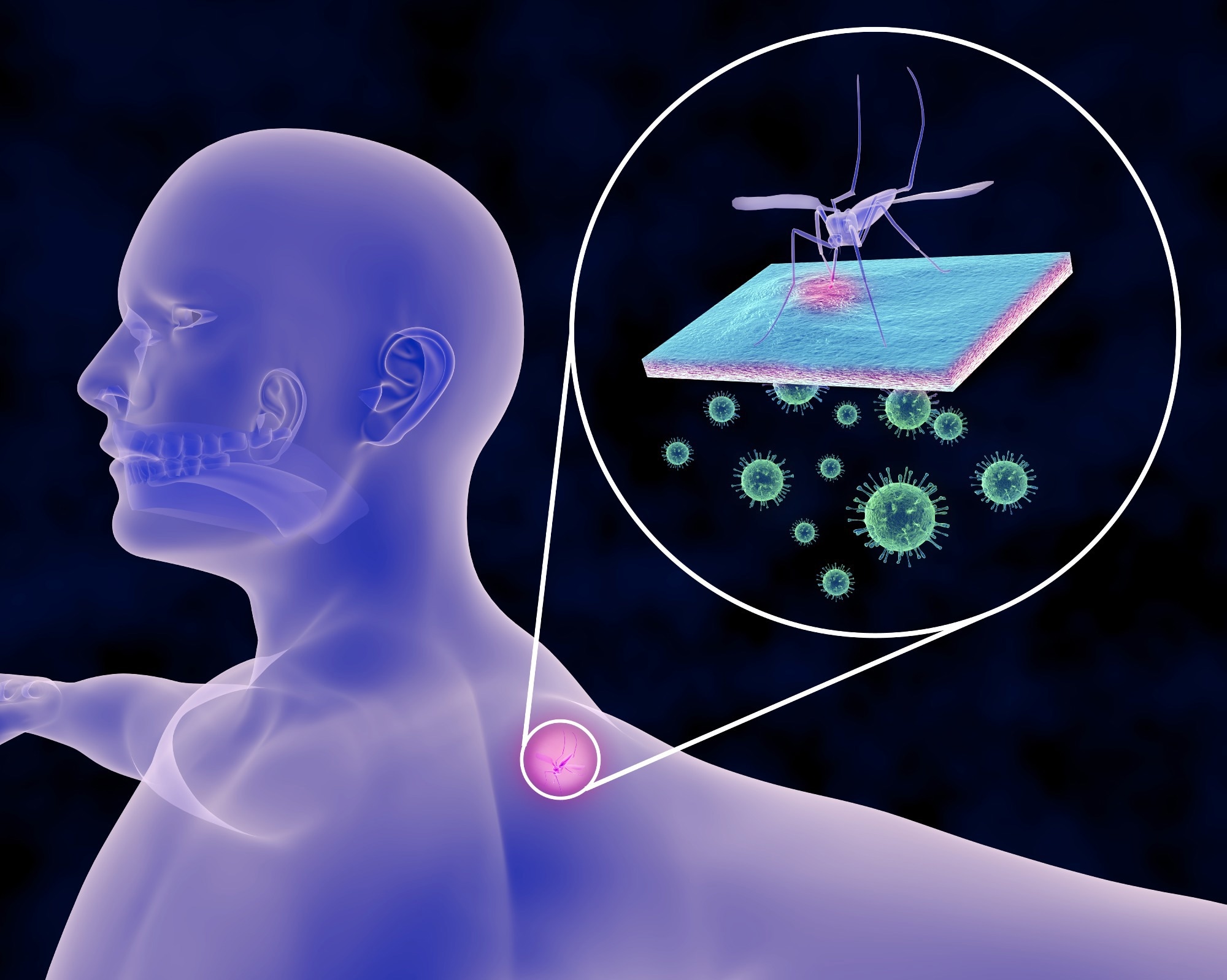
This nanotechnology day, AZoNano speaks with Erick Javier Martinez Rodriguez from Ohio State University about his research into novel nanoparticle tools that could be used as an alternative to traditional pesticides. As this research progresses, Martinez hopes that Emperor 1800 - a modified form of carbon black - could be used to help reduce the spread of diseases transmitted by mosquitoes.
What is yellow fever, and why is it so dangerous?
Yellow fever is a viral hemorrhagic disease transmitted by the adult female yellow fever mosquito Aedes aegypti. Severe symptoms like fever, headaches, muscle pain, vomiting, and fatigue can be dangerous because they can cause death to those who are infected within just 10 days.
The virus is primarily endemic to tropical areas in Africa and Latin America, where conditions are favorable for mosquito survival throughout the year and where resources and vaccines are limited in underdeveloped countries.
What are the current measures used to control mosquitoes, and why are they considered inefficient?
Current measures utilize EPA-registered pesticides that include organophosphates like malathion and synthetic pyrethroids and natural pyrethrins, which are sprayed as adulticides, meaning they target the adult stage of mosquitoes.
The use of these pesticides has helped reduce potential outbreaks in many countries; however, the constant exposure to these chemicals has led to mosquitoes developing resistance, which means that mosquito populations that exhibit resistant genes are less affected by these treatments.
Nanoparticles have previously shown the potential to control mosquito vectors. Can you give an overview of how you and your team hope to eradicate this invasive species in its juvenile stage and how this will help to control diseases such as yellow fever?
Our team focuses on discovering new tools that could be used as an alternative to traditional pesticides. We aim to target the juvenile stage, specifically 1st instar larvae, because it is the stage where mosquitoes are highly susceptible to control agents, given their small size.

Image Credit: Shutterstock.com/Aunt Spray
Mosquito larvae develop underwater and cannot spread arbovirus diseases, so if we can manage to control them at their juvenile stage, then we can prevent mosquitoes from reaching their adult stage, therefore reducing the possibilities of disease propagation. With the addition of new tools and advances in technology, we can reduce the spread of the diseases they transmit.
What is carbon black, and what are its current uses? How can this be made into a commercially available nanoparticle that is highly effective against insecticide-resistant mosquitoes?
Carbon black is a fine black powder composed of elemental carbon produced from a highly controlled process of partial burning and decomposition obtained by high temperatures of oil residues. The remains of the unburnt carbon, ranging in size from 10 to 500 nanometers, are collected and used in a diverse group of materials as rubber reinforcers and for paints in the coating industry.
To make this a commercial product, it would need to go through the standard procedure for any pesticide, which involves further evaluation of its efficacy and its environmental and human health impact before being approved by the Environmental Protection Agency (EPA).
How does Emperor 1800 use nanomaterials to control insect populations?
Emperor 1800 (E1800) is a modified form of carbon black. Our results demonstrated that E1800 exists as nanoparticles and larger aggregates.
The E1800 nanoparticles and aggregates accumulate in the midgut (stomach) and mouthparts of larval mosquitoes, as well as on the setae (hairlike structures surrounding the body) and anal papillae (structures involved with salt and water balance). This accumulation of carbon black may disrupt larval movement, respiration, feeding, and digestion, leading to their death.
How did you test the efficacy of Emperor 1800, and what were your results?
We evaluated the acute toxicity of E1800 by exposing 1st instar Ae aegypti larvae of both pyrethroid-susceptible and pyrethroid-resistant strains to different concentrations of freshly prepared suspensions of E1800 for 48 hours to evaluate their mortality after treatment application.
Our results show that E1800 suspensions caused concentration-dependent mortality in both strains of mosquitos. In addition, we also evaluated the stability of these suspensions over time, showing that they are toxic against mosquito larvae of both strains 12 weeks after solution preparation.
What makes Emperor 1800 potentially more effective than insecticides?
The advantage of using E1800 is that, based on our results, we determined that one of its modes of action is to form conglomerates around the larval body, thus limiting their ability to feed and move. This physical mode of action limits resistance concerns that frequently arise when there is overexposure to a specific pesticide.
In addition to its mode of action, our study also shows that nanoparticle solutions remain toxic to 1st instar larvae of both strains and how 12-week-old solutions of E1800 formulations were still showing activity against 1st instar larvae of both strains.
To our surprise, these particles were actually showing higher mortality rates in the pyrethroid-resistant strain than in the pyrethroid-susceptible strain, which was very encouraging.
Even though nanoparticles appear to have a low impact on non-target organisms, there are still many concerns regarding their use in terrestrial and aquatic environments. Why is this?
One of the reasons for these concerns is that many nanoparticles’ exact mode of action is yet to be discovered in non-target and even target organisms. Without fully understanding their mechanism of action on different organisms, it is difficult to predict the ecological outcome that the dispersal of nanoparticles might have in the environment.

Image Credit: Shutterstock.com/Rost9
For example, as previously described in our study, carbon black nanoparticles were effective after 12 weeks of suspensions, making it a long-lasting product that has lasting effects on mosquito larvae. Although this might be encouraging for mosquito control, it raises concerns about its effect on other aquatic and terrestrial organisms throughout time.
What needs to be investigated before Emperor 1800 or other CNPs can safely be employed to control insect populations?
Although we found very encouraging information, we do not promote using E1800 as a control for mosquito breeding.
Further investigation is needed to gather enough data that supports the use of carbon black in bodies of water without having an additional impact on other organisms.
Some studies have raised concerns about carbon black’s effects on the environment and human health, although more information is needed to support this claim. With that in mind, our study at least provides insight into the toxicity carbon black has on both larvae strains, which is very promising.
After the success of your initial study, what are the next steps for your research, and what partners do you hope will accompany you on this journey?
We would welcome a partnership with a company in the industry to help us further ascertain the mode of action of E1800 and its effects on non-target organisms. We are also interested in testing E1800 with other forms of carbon black on additional mosquito species and other life stages (e.g., adult mosquitoes) to determine its full potential as a mosquito control agent.
About Erick Javier Martinez Rodriguez
 Erick Javier Martinez Rodriguez is a Master’s student in Dr. Peter Piermarini’s lab in the Entomology Department at the Ohio State University. He majored with a Bachelor’s degree in Agriculture Science from the Agricultural Pan-American School El Zamorano in his home country Honduras. His research involves the toxic and behavioral activity of natural extracts obtained from plants and animals on mosquitos and other pests.
Erick Javier Martinez Rodriguez is a Master’s student in Dr. Peter Piermarini’s lab in the Entomology Department at the Ohio State University. He majored with a Bachelor’s degree in Agriculture Science from the Agricultural Pan-American School El Zamorano in his home country Honduras. His research involves the toxic and behavioral activity of natural extracts obtained from plants and animals on mosquitos and other pests.
Disclaimer: The views expressed here are those of the interviewee and do not necessarily represent the views of AZoM.com Limited (T/A) AZoNetwork, the owner and operator of this website. This disclaimer forms part of the Terms and Conditions of use of this website.